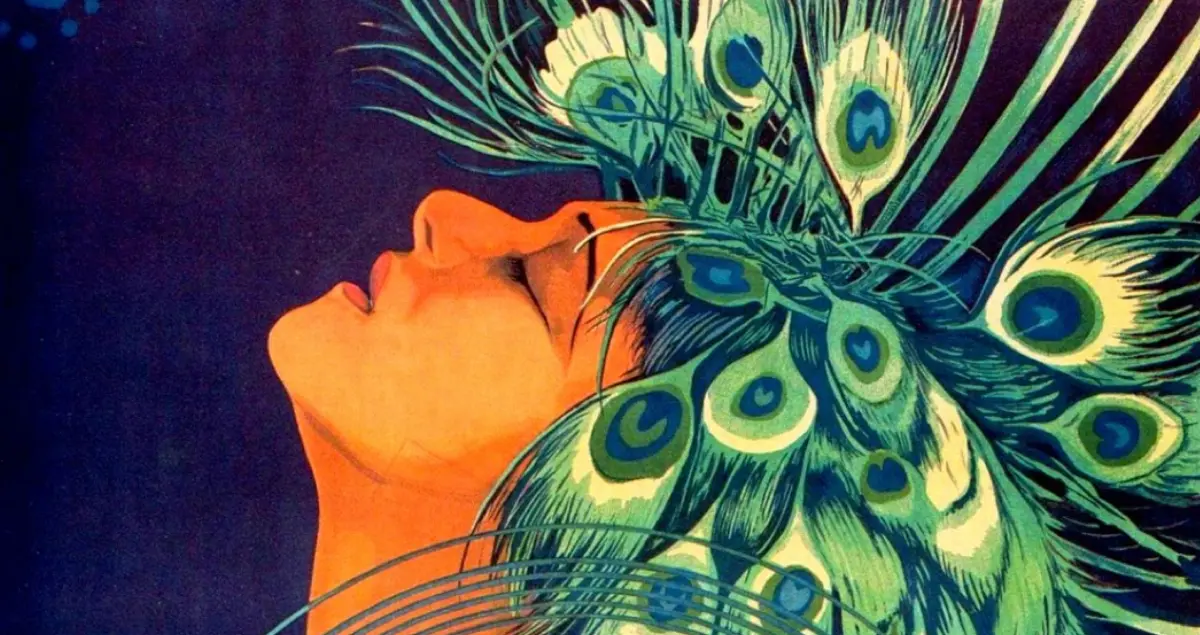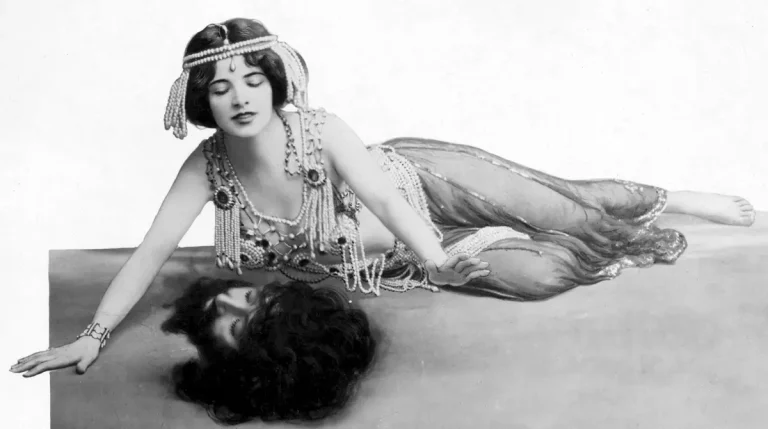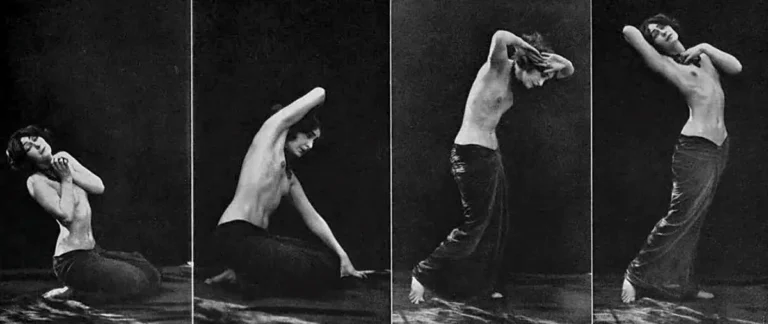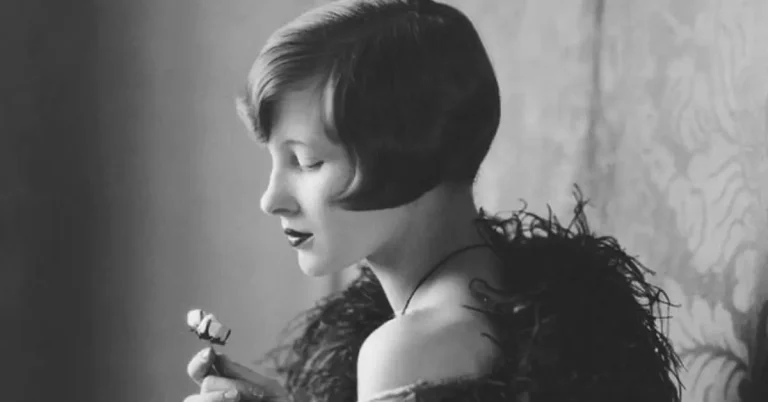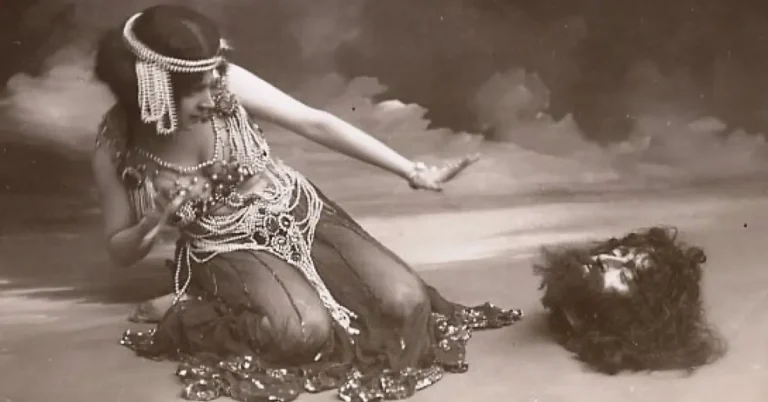Salome Movie: Seductive Silent Film Goddesses Vamp to the Hilt
As the motion picture industry took off, Salomania stormed the silver screen—Salome movies shocked, scandalized, and mesmerized people around the globe. It is hard to overstate how influential the Salome story was in silent film.
The British Film Institute lists 21 films containing “Salome” in the title for films made before 1930, but this is a serious undercount, as the BFI listing does not include a number of productions. Nor does it include dozens of films influenced by Salome but excluding her name in the title. An example is Roscoe “Fatty” Arbuckle’s hilarious “Salome dance,” from the 1918 film The Cook.
Another Salome-influenced movie is the 1917 Cleopatra starring one of the original film vamps, Theda Bara. The stills of Bara in costume from Cleopatra are strongly reminiscent of her look for the 1918 movie Salomé (discussed below). Bara’s performance borrowed heavily from the Orientalist myth of Salome, including flesh-baring costumes and scenes of dance and seduction.
The First Salome Movie
In 1901, Béla Zsitkovszky directed the first staged Hungarian film, A táncz. Early in the film, Emilia Márkus performs a “Salome dance” as part of the film’s review of world dance history.
Márkus, known as “the blonde wonder,” was one of the most famous Hungarian actresses. The film is lost, and the critic Pekár Gyula wondered what her dance might have been like. “Only the poetic imagination can help us here: the creative imagination of one of our greatest and most beautiful artists, who could better reproduce the dangerous, unconscious charm of Salome.”
Adorée Villany As A Film Salome
German director Oskar Messter made the short film Tanz der Salome in 1906, starring Adorée Villany. A dancer already notorious for performing the Dance of the Seven Veils in an extreme state of undress, Villany removed most of her clothing in the film.
Villany also appeared in director Rino Lupo’s 1915 Danish silent film Slør-Danserinden (The Veil Dancer), which has a Salome-like theme. The program noted that Villany was “popularly called ‘the bare dancer’” and that the film features “art-reform-dance.”
Florence Lawrence and La Salome
Also in 1908, Vitagraph released Salome. This film is notable for casting Florence Lawrence—known as the first “movie star”—in the title role. Oreste Mentasti (in Italian) directed Erodiade (also known as La Salome) in 1912, featuring Adriana Costamagna as the wayward princess. Mentasti’s film is notable for sticking fairly close to the plot of Oscar Wilde’s play rather than trying to soften the horrifying story as most other films of the era were wont to do.
Theda Bara: Salome as the Ultimate Vamp
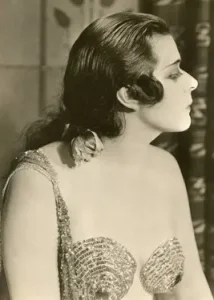
Fox Film Company released Salomé in 1918, featuring Theda Bara, a proven box-office draw. Big-budget for the era, the film featured elaborate sets and costumes. Bara’s provocative outfits in the film upset many, and the film was censored in several cities.
Bara was one of the first Hollywood sex symbols and played femme fatale or “vampire” roles. A “vamp” sought to seduce innocent men, drain their wallets, and ruin their morals; Bara was so closely associated with the vamp person that it became known as “Bara-esque.” She played up the image, claiming her father was an Arab sheik (he wasn’t) and that she was the reincarnated spirit of Lucretia Borgia, “the world’s most picturesquely wicked woman.”
Bara’s Salome movie, perhaps by design, caused an uproar. Bara herself was denounced as immoral, as well as “overbold and underclad.” The film was a hit, however, with one theater charging an unheard-of 75 cents per ticket and still packing the house.
The film was long considered lost, but a short fragment was recently discovered:
Alla Nazimova Creates a Cult Salome
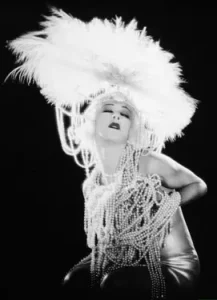
1923 saw Alla Nazimova starring in an art-house movie version of the Salome story. Her Salomé avoided recreating ancient Judaea in favor of a lush art-nouveau setting. Nazimova appears in various costumes, including remarkable headdresses.
Many did not know quite what to make of the film. While Photoplay called Wilde’s original story “a hot-house orchid of decadent passion,” the review was skeptical of the film adaptation:
We are not sure whether we like Madame Nazimova’s idea of Salome as a petulant little princess with a Freudian complex and a headdress of glass bubbles. We rather believe such a Salome would not have stirred men so in those good old pagan days. You have our warning: this is bizarre stuff.
Still, Nazimova’s Dance of the Seven Veils remains among the most famous on film:
Nazimova’s film was a critical and box-office flop, and she never recovered financially from the money she invested in the production. Her Salomé has since, however, become a cult classic, winning praise for its artistic ambition and daring.
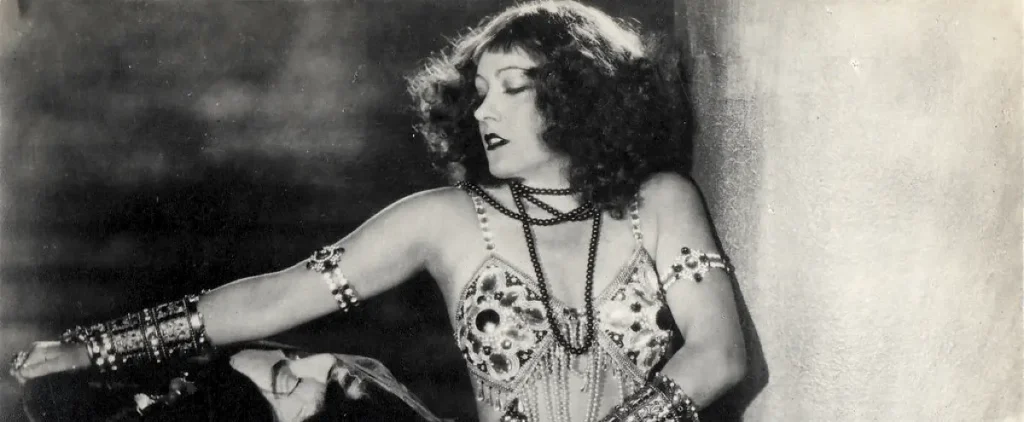
Gloria Swanson: “I Am Salome!”
In Stage Struck (1925), Gloria Swanson plays a small-town waitress who dreams of becoming a movie star—and in her fantasy, she becomes Salome. Decked out in the classic Salome costume, she ascends a stage and cries to the masses, “Look! I am Salome!” With theatrical flourish, she hoists the severed head of John the Baptist on a platter, triumphant.
But her Salome movie fantasy collapses into everyday absurdity. She’s back in the diner holding a tray with a boring dinner order. The scene pokes fun at Hollywood ambition while drawing directly from the iconography of Salomania—the dream of feminine power expressed through spectacle, seduction, and self-styling. Here, Salome is both the fantasy and the punchline: a figure of deadly glamour whose mythic image is just another dish on the menu.
Salome of the Tenements
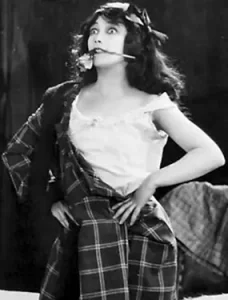
The 1925 American film Salome of the Tenements was about a young Jewish woman from the impoverished Lower East Side of New York City. Jetta Goudal played the title role.
The film follows Sonya, a journalist in New York City’s Lower East Side, as she seeks to escape poverty by marrying a wealthy Christian man. Nicknamed “Salome” for her seductive charm and calculated allure, Sonya also uses beauty and performance to pursue what she wants.
But where the original Salome’s tale ends in destruction, Sonya’s story takes a redemptive turn. Though she initially plays into the role of the exotic temptress to win status and security, she experiences a moral awakening, rejecting illusion and ambition in favor of love and authenticity.
This post is part of a broader exploration of Salomania and Salome’s rise as a cultural icon in the early 20th century.
→ Visit the main Salomania hub page to discover more.

